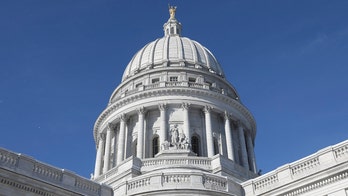When Solyndra went bankrupt and cost taxpayers up to $530 million, the Obama administration's green energy loan program was subjected to congressional hearings and became an election-year issue. Now, another solar panel company may be headed for a similar fate.
SoloPower, which makes thin-film solar panels at a new plant in Portland, Ore., opened Sept. 27 with an upbeat ribbon-cutting ceremony. Local and state politicians gushed about the company eventually operating four production lines and creating 450 well-paid green jobs.
Just a few months later, those predictions, and SoloPower's future, are on shaky ground.
The first production line was never completed. In January, the company had a round of layoffs. SoloPower won't say how many of its 60 employees received pink slips.
A management shakeup soon followed -- gone are the chief executive, president and chief technology officer. The company is now trying to raise money by selling some of its equipment through a third party and is attempting to restructure its $197 million federal loan guarantee.
Many are not surprised.
"What we're seeing in Oregon, what we're seeing in California and what we're seeing in Washington, D.C., is eventually the money runs out, and these programs go with them," said Todd Myers, author of "Eco-Fads: How the Rise of Trendy Environmentalism is Harming the Environment."
Despite the warning signs, the state of Oregon is continuing to put taxpayer money at risk. In December, the agency Business Oregon issued SoloPower a $20 million tax credit. The company sold the tax credit for $13.5 million in cash.
In order to secure the money, SoloPower had to employ 39 people and convince bureaucrats that it would still be in business in five years. The state is not giving up hope.
"This company's still in operation," said Nathan Buehler of Business Oregon, "and we're certainly paying attention, and we're looking forward to seeing what they do in the coming years."
Solar industry analysts are not optimistic. The same economic factors that took down Solyndra and a host of other U.S. solar companies still exist. A glut of cheap solar panels on the worldwide market has driven prices so low, U.S. companies with their higher production costs can't compete.
The former mayor of Portland seems to suggest the answer is more help from U.S. taxpayers.
"They survive by downscaling and being responsible with the resources they have," said Sam Adams, "by reducing costs and being able to wait out, hopefully, until Congress passes new energy tax credits."
The city of Portland issued SoloPower a $5 million loan along with other tax incentives. All told, the state and local investment is $58 million.
But some Oregonians are not amused. Richard Leonetti of the Oregon Tax Foundation said politicians are proving to be lousy venture capitalists with this and other green energy subsidies.
"The state is short of money for schools," said Leonetti. "This is the same pot of gold, and it's being put down this sinkhole. Not just this company -- there are others that have gotten these credits."
Business Oregon maintains the program is working, citing the creation of 1,300 direct jobs and 3,000 indirect jobs created in the past six years at the four solar companies that received loans and tax credits. Officials say those jobs have generated $28 million in tax revenue and $787 million in total labor income.
Todd Myers remains skeptical.
"If you don't get money from the government, the policies simply don't work," he said. "Only with government favoritism, taxpayer bailouts and those sorts of things can these things work."
The biggest pot of taxpayer money is apparently still just out of reach for SoloPower. A spokesman for the Department of Energy confirmed the company has not met the benchmarks required to draw on its $197 million federal loan guarantee.
But the DOE would not say what the benchmarks are or if the feds will lower the bar in order to help the company survive.





